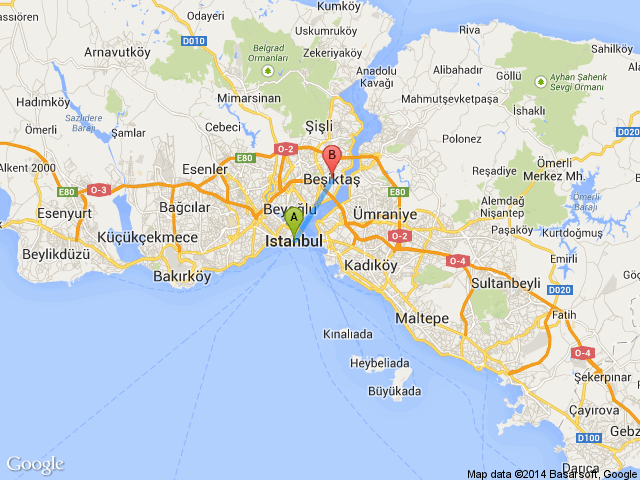türkçe links to original Turkish article
(Hürriyet Newspaper, 26 October 2017)
Thank goodness for metro excavations!
The findings made at a metro construction site alongside Barbaros
Boulevard in Beşiktaş, Istanbul, comprise information that will
change the city's history. A 3,500 year-old cemetery has been uncovered
at the site, with 35 graves confirmed so far. The fact that 'kurgan'
(mound)-type graves, belonging to the culture of the north Black Sea
steppe peoples, in other words ancient Turks and Altai peoples, have
been found has excited the scientific world.
The findings at the Beşiktaş archaeological excavation call into question
the accepted history that the Turks first entered Anatolia after the Battle
of Malazgirt in eastern Turkey in 1071. It is now thought that in light
of these findings the Turks came in the late Bronze Age and the
beginning of the Iron Age (1,200-1,500 B.C.).
We were able to enter the excavation site with the special permission
of the Culture and Tourism Ministry and in the company of Zeynep
Kızıltan, the Director of the Istanbul Archaeological Museum. There
are many workers and archaeologists working at the site, where one
sees tens of circular stone piles. Kızıltan explained that this is Istanbul's
oldest cemetery and that the circular stone mounds are the 'kurgan' type
belonging to the peoples of the north Black Sea steppe, meaning ancient
Turks and Altai peoples.
Although archaeologists stated that it is difficult right now to identify
the ethnicity of the those buried here, it is understood from scientific
sources that the Turks continued the practice of 'kurgan'-type graves
until the 10th century. Once anthropologists examine the skeletons in
the graves, we will learn the roots of these oldest of Istanbulites.
Scientific sources related to Central Asia and the steppe culture show
that the 'kurgan'-type graves seen in the early Bronze Age (3,000 B.C.)
were used by important Turkish clans like the Oğuz Turks, Huns and
Göktürks.
It is known from 'kurgan' graves in the Balkans that there had been a
wave of migration from the steppes in the Bronze Age, prior to the
subsequent tribal migrations. It is thought that the findings at Beşiktaş
are from this migration wave and that they settled on the fresh water
shore of that period. Up until now the first 'kurgan' grave was found
in Istanbul at Silivri, at an excavation also under the aegis of the
Istanbul Archaeological Museum. Now the relationship between the
'kurgans' at Silivri and Beşiktaş will be examined.
In some of the graves at Beşiktaş burnt bones have been found in
urns, indicating that cremation at 700-800 degrees heat was employed.
Additionally, the adults in the kurgans were buried in the fetal position.
Both cremation and the fetal position burial are known to have been
part of the north Black Sea steppe culture.
Director Kızıltan stated that "we are working in a kurgan-type
cemetery site. There are two burial styles here: cremation and half-
fetal and full-fetal position burial. The cremation style is much more
prevalent. After the body was burned the bones and ashes and buried,
as you see, at various intervals, after which they were covered with
stones. The kurgan-type burial is a custom that came to our Thrace
region from north of the Black Sea, in particular from the Central
Asia steppe culture. We think that the findings date to either the
early Iron Age or the First Iron Age, around 1,000 - 1,200 B.C.
In any event, we will confirm this with Carbon-14 analysis and
DNA tests."


Hiç yorum yok:
Yorum Gönder